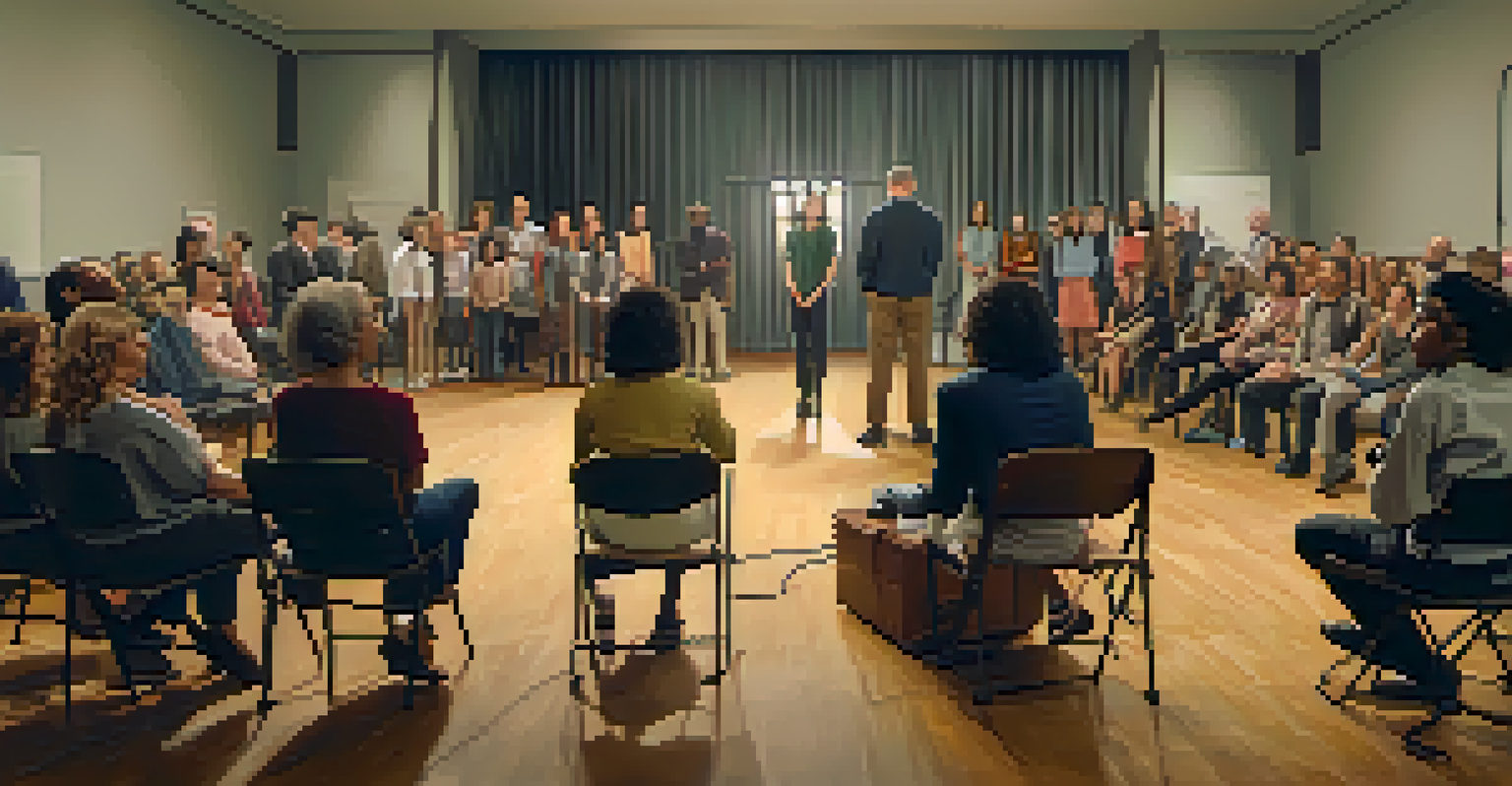Casting Directors: Gatekeepers of Talent in Hollywood Films

What Does a Casting Director Do in Hollywood?
Casting directors play a crucial role in the film industry by identifying and selecting actors for various roles. They work closely with directors and producers to understand the vision of the project and ensure the right talent is chosen. Their responsibilities range from organizing auditions to negotiating contracts, making them instrumental in the filmmaking process.
Casting is the art of choosing the right actor for the right role, and it’s more than just a physical match; it’s about finding someone who can bring a character to life.
These professionals often sift through countless headshots and resumes, which can feel overwhelming. Their keen eye for talent allows them to spot potential in actors, even those who might not have extensive experience. This ability to recognize raw talent is what sets great casting directors apart from the rest.
In addition to finding the right fit for roles, casting directors also help shape the overall tone and style of a film. They are often the first point of contact for actors, making them the gatekeepers of not just talent, but also of the film's future success.
The Audition Process: A Behind-the-Scenes Look
Auditions are a critical part of the casting process, and they can be a nerve-wracking experience for actors. Casting directors facilitate this process by creating a comfortable environment where talent can showcase their skills. They often conduct auditions in various formats, from in-person meetings to virtual submissions, adapting to the needs of both the actors and the production.

During auditions, casting directors observe not just the performance but also the actor's ability to take direction and their chemistry with other cast members. This is particularly important in ensemble casts, where the dynamics can make or break a scene. Their insights guide the decision-making process as they collaborate with producers and directors.
Casting Directors Shape Film Success
Casting directors play a vital role in selecting the right actors, influencing the overall tone and success of a film.
The audition experience can also provide valuable feedback for actors, helping them grow in their craft. Even if an actor doesn’t land the role, they often leave with a better understanding of the industry and what casting directors are looking for in a performance.
Building Relationships: The Networking Game
Casting directors are not just talent scouts; they are also master networkers. Their relationships with agents, managers, and actors are vital for finding the perfect fit for a project. By maintaining these connections, they stay informed about emerging talent and industry trends, which can greatly benefit their casting decisions.
The best stories come from diverse voices, and casting directors have the power to make those voices heard.
These relationships often extend beyond a single project. When a casting director collaborates with talented actors and crew members, they build a reputation that can lead to future opportunities. This network can also create a sense of community within the industry, fostering collaboration among artists.
In an industry that thrives on connections, casting directors play a pivotal role in linking talent with opportunities. This networking not only helps them find the right actors but also enriches the overall creative process in filmmaking.
The Art of Casting: Beyond Just Looks
Casting is an art form that goes beyond physical appearances; it involves understanding the essence of each character. Casting directors must delve deep into a script to grasp the nuances of the characters and the story being told. This understanding allows them to select actors who bring authenticity and depth to their roles.
The best casting decisions often come from a mix of intuition and experience. A casting director might see something in an actor that others overlook, leading to a breakthrough performance. This unique perspective is what adds layers to a character, making the story more compelling.
Diversity is Key in Modern Casting
Casting directors are leading efforts to enhance diversity and inclusion, ensuring a wide range of voices are represented on screen.
Moreover, casting directors also consider how actors' previous roles might affect audience perception. They aim to create a diverse and dynamic cast that not only fits the narrative but also resonates with viewers on multiple levels.
Diversity and Inclusion: A Modern Responsibility
In recent years, the entertainment industry has made significant strides toward diversity and inclusion, and casting directors are at the forefront of this movement. They play a vital role in ensuring that a wide range of voices and experiences are represented on screen. This commitment to diversity enriches storytelling and reflects the world we live in.
Casting directors now actively seek talent from various backgrounds, challenging traditional casting norms. By embracing diversity, they help create films that resonate with broader audiences and inspire change within the industry. Their efforts contribute to a more equitable representation of culture and identity.
This shift toward inclusion is not just a trend; it's a necessary evolution in filmmaking. As casting directors advocate for diverse talent, they also influence how stories are told, ultimately shaping the future of Hollywood.
The Impact of Technology on Casting Practices
Technology has revolutionized the casting process in many ways, making it more efficient and accessible. Online platforms allow casting directors to reach a wider pool of talent, breaking geographical barriers. Actors can now submit self-taped auditions from anywhere, giving them more opportunities to showcase their skills.
Additionally, social media has become a powerful tool for casting directors. By following actors' work and engaging with their content, they can gain insights into their personalities and talents. This digital engagement creates a more holistic view of potential candidates beyond traditional auditions.
Technology Transforms Casting Processes
Advancements in technology have made casting more efficient, allowing for broader talent access and self-taped auditions.
While technology streamlines the process, it also presents new challenges. Casting directors must balance the convenience of online submissions with the need for personal interactions to truly gauge an actor's suitability for a role. This evolving landscape requires adaptability and creativity in their approach.
The Future of Casting: Trends and Predictions
As the film industry continues to evolve, so does the role of casting directors. Trends indicate a growing emphasis on authenticity and relatability in casting choices. Audiences increasingly crave stories that reflect their own experiences, prompting casting directors to prioritize genuine representation.
Moreover, the rise of streaming platforms has changed the types of projects being developed, leading to more niche storytelling. Casting directors must adapt to these changes by finding talent that aligns with unique narratives, pushing the boundaries of traditional casting.

Looking ahead, the future of casting is bright, with endless possibilities for innovation and creativity. As they navigate these changes, casting directors will continue to shape the landscape of Hollywood, showcasing diverse talent and compelling stories that resonate with audiences worldwide.